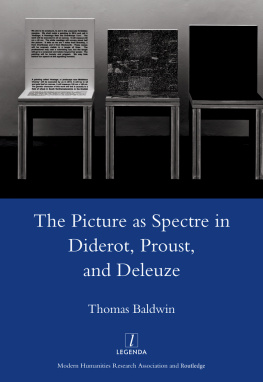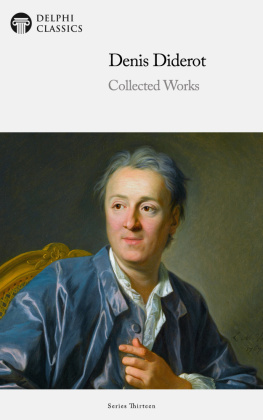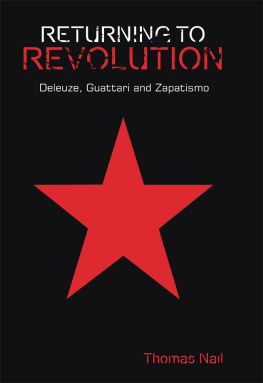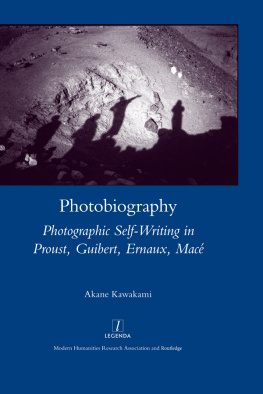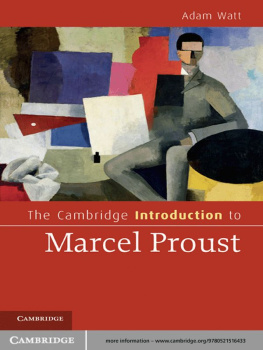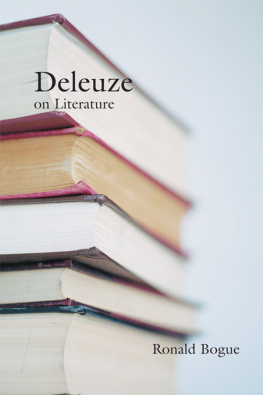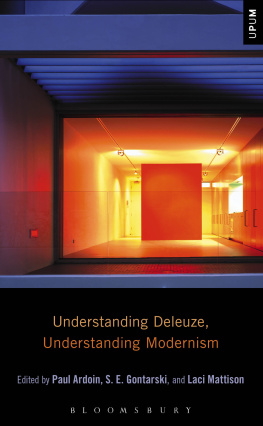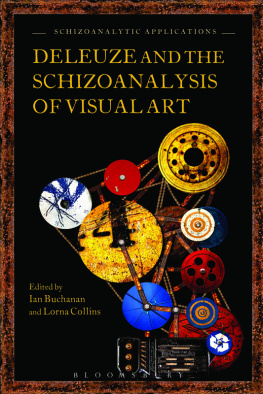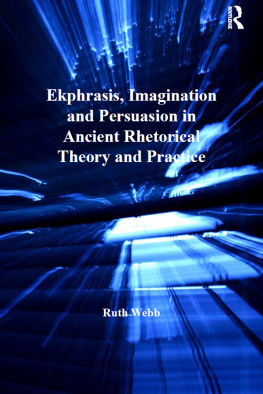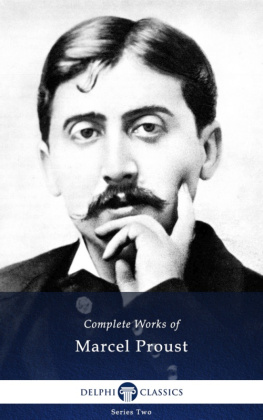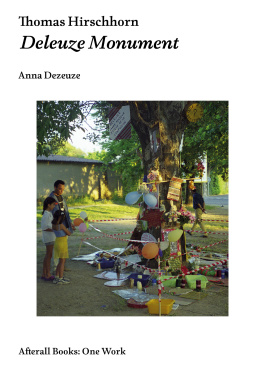THE PICTURE AS SPECTRE IN DIDEROT, PROUST, AND DELEUZE
Legenda
LEGENDA, founded in 1995 by the European Humanities Research Centre of the University of Oxford, is now a joint imprint of the Modern Humanities Research Association and Routledge. Titles range from medieval texts to contemporary cinema and form a widely comparative view of the modern humanities, including works on Arabic, Catalan, English, French, German, Greek, Italian, Portuguese, Russian, Spanish, and Yiddish literature. An Editorial Board of distinguished academic specialists works in collaboration with leading scholarly bodies such as the Society for French Studies and the British Comparative Literature Association.

The Modern Humanities Research Association (MHRA) encourages and promotes advanced study and research in the field of the modern humanities, especially modern European languages and literature, including English, and also cinema. It also aims to break down the barriers between scholars working in different disciplines and to maintain the unity of humanistic scholarship in the face of increasing specialization. The Association fulfils this purpose primarily through the publication of journals, bibliographies, monographs and other aids to research.

Routledge is a global publisher of academic books, journals and online resources in the humanities and social sciences. Founded in 1836, it has published many of the greatest thinkers and scholars of the last hundred years, including adorno, einstein, Russell, Popper, Wittgenstein, Jung, Bohm, Hayek, Mcluhan, Marcuse and Sartre. Today Routledge is one of the world's leading academic publishers in the Humanities and Social Sciences. It publishes thousands of books and journals each year, serving scholars, instructors, and professional communities worldwide.
www.routledge.com
Editorial Board
Chairman
Professor Colin Davis, Royal Holloway, University of London
Professor Malcolm Cook, University of Exeter (French)
Professor Robin Fiddian, Wadham College, Oxford (Spanish)
Professor Paul Garner, University of Leeds (Spanish)
Professor Andrew Hadfield, University of Sussex (English)
Professor Marian Hobson Jeanneret, Queen Mary University of London (French)
Professor Catriona Kelly, New College, Oxford (Russian)
Professor Martin McLaughlin, Magdalen College, Oxford (Italian)
Professor Martin Maiden, Trinity College, Oxford (Linguistics)
Professor Peter Matthews, St Johns College, Cambridge (Linguistics)
Dr Stephen Parkinson, Linacre College, Oxford (Portuguese)
Professor Suzanne Raitt, William and Mary College, Virginia (English)
Professor Ritchie Robertson, The Queens College, Oxford (German)
Professor Lesley Sharpe, University of Exeter (German)
Professor David Shepherd, Keele University (Russian)
Professor Michael Sheringham, All Souls College, Oxford (French)
Professor Alison Sinclair, Clare College, Cambridge (Spanish)
Professor David Treece, Kings College London (Portuguese)
Managing Editor
Dr Graham Nelson
41 Wellington Square, Oxford OX1 2JF, UK
legenda@mhra.org.uk
www.legenda.mhra.org.uk
The Picture as Spectre in Diderot, Proust, and Deleuze
THOMAS BALDWIN
Modern Humanities Research Association and Routledge 2011
First published 2011
Published by the
Modern Humanities Research Association and Routledge
2 Park Square, Milton Park, Abingdon, Oxon OX14 4RN
711 Third Avenue, New York, NY 10017, USA
LEGENDA is an imprint of the
Modern Humanities Research Association and Routledge
Routledge is an imprint of the Taylor & Francis Group, an informa business
Modern Humanities Research Association and Taylor & Francis 2011
ISBN 978-1-907625-03-9 (hbk)
All rights reserved. No part of this publication may be reproduced, stored in a retrieval system, or transmitted in any form or by any means, electronic, mechanical, including photocopying, recordings, fax or otherwise, without the prior written permission of the copyright owner and the publisher.
Product or corporate names may be trademarks or registered trademarks, and are used only for identification and explanation without intent to infringe.
Contents
Guide
FOR GRANNY
I am grateful to Michael Baldwin for reading drafts of each chapter and for his efforts to help me say what I mean. I would also like to thank Lynn and Jim Baldwin, who have always offered encouragement and support; Charles Harrison, who commented on drafts of the first three chapters; James Fowler, who read and made comments on parts of the chapter on Diderot; Shane Weller, who read early versions of ; Fabien Arribert-Narce, Lorenzo Chiesa, Ana de Medeiros, Patrick ffrench, Ben Hutchinson, Jon Kear, and Rowan Tomlinson, all of whom have discussed various aspects of the project with me over the years. I am indebted to Pyra Wise and Bernard Brun, who made it possible for me to spend the last four months of 2008 as a chercheur invit at the ENS, Paris, working on Prousts manuscripts. Graham Nelsons suggestions and promptings in recent months have been very useful, and Susan Wharton did an excellent job of copyediting the book. Finally, I thank Claire Lozier for her patience and love.
This book explores the work of certain spectres in Denis Diderots Salons , Marcel Prousts A la recherche du temps perdu , and Gilles Deleuzes Francis Bacon, logique de la sensation . The three texts in question are, to different degrees, literary and theoretical. They are all inhabited by pictures in spectral garb. The ways of habitation develop and increase in complexity. In the Salons , real paintings that have been named and attributed are corrected and thus rendered partially as literary figments. In Prousts Recherche , while the name of a real artist (Hubert Robert) is supplied, the painting described, if that is indeed what it is, does not correspond to any recognized work of that artist, and may correspond to work typically associated with a different artist or artistic movement. Deleuzes work on Francis Bacon is doubly spectral: the painting is understood as something ghostly (its figurative pretensions undermined by the force of a diagramme), and in the Conclusion. For the time being, however, it is enough to say that as an apparition, phantom, or ghost, especially one of a terrifying nature or aspect, an unreal object of thought; a phantasm of the brain or a faint shadow or imitation of something ( OED ), neither the spectral picture nor the spectral text can be construed as single, unmoving or unchanging visibilities.
In the first chapter, I provide an account of the role of art as spectre or phantom in a selection of twentieth-century theoretical and philosophical texts, particularly as this pertains to both art and ekphrasis as imitation. Questions of linguistic transparency and opacity have occupied an important place in scholarly discussion about the working of ekphrasis. Such questions have their equivalents in the discourse of the visual arts. The critical terrain of literary ekphrasis can, broadly speaking (and with some notable exceptions), be divided into two approaches. The first consists in a form of detective labour that results in a precise identification of the real work of art described by the text. This work is identified as the source of the ekphrasis, which is construed as a transparent linguistic window. For example, in her impressive two-volume study of Diderot and art, Diderot critique dart (which remains a key reference in Diderot studies), Else Marie Bukdahl writes:

